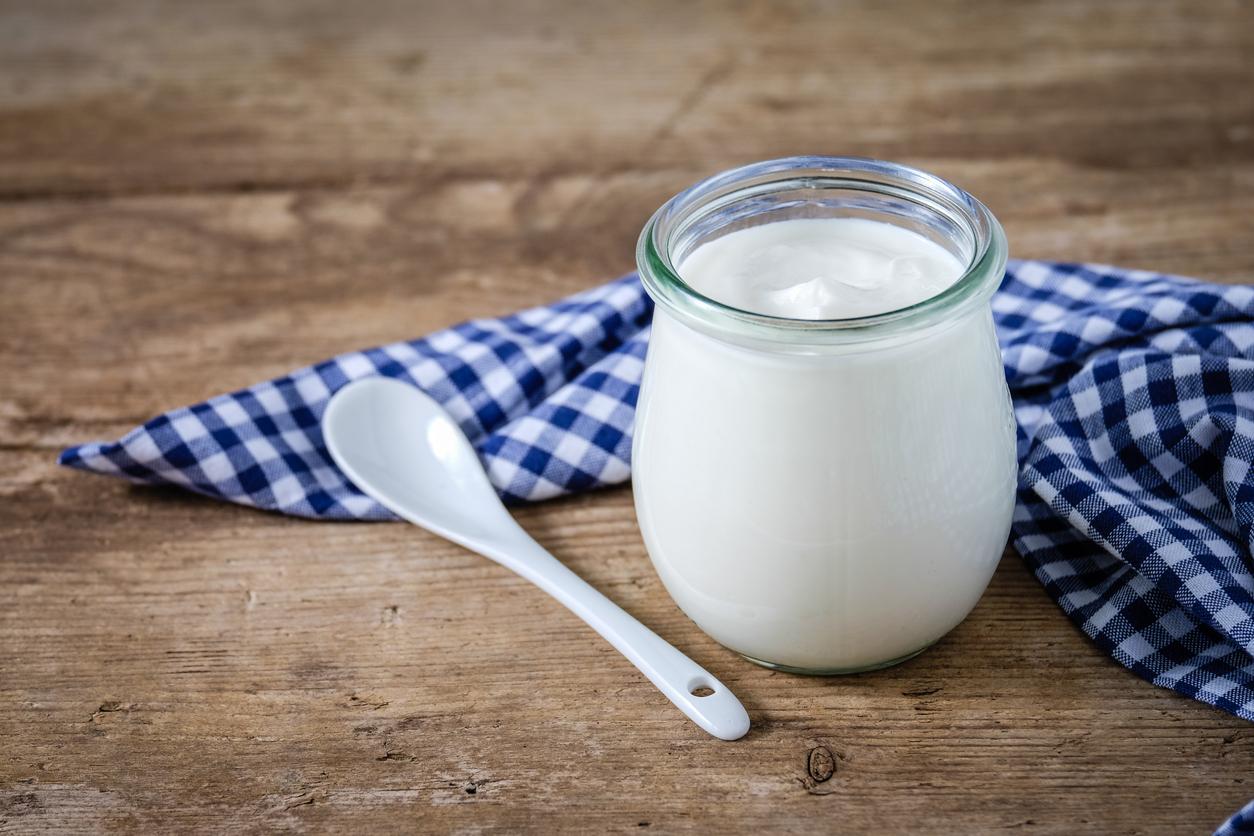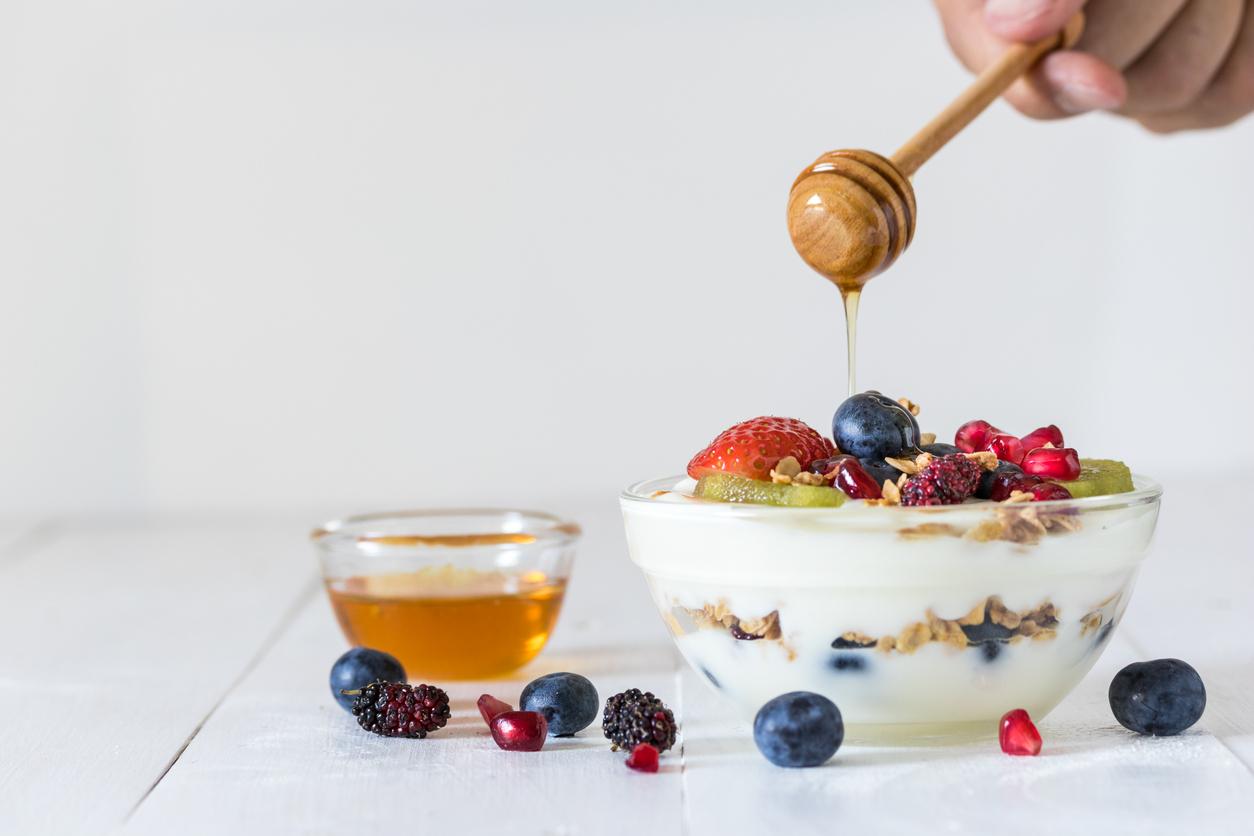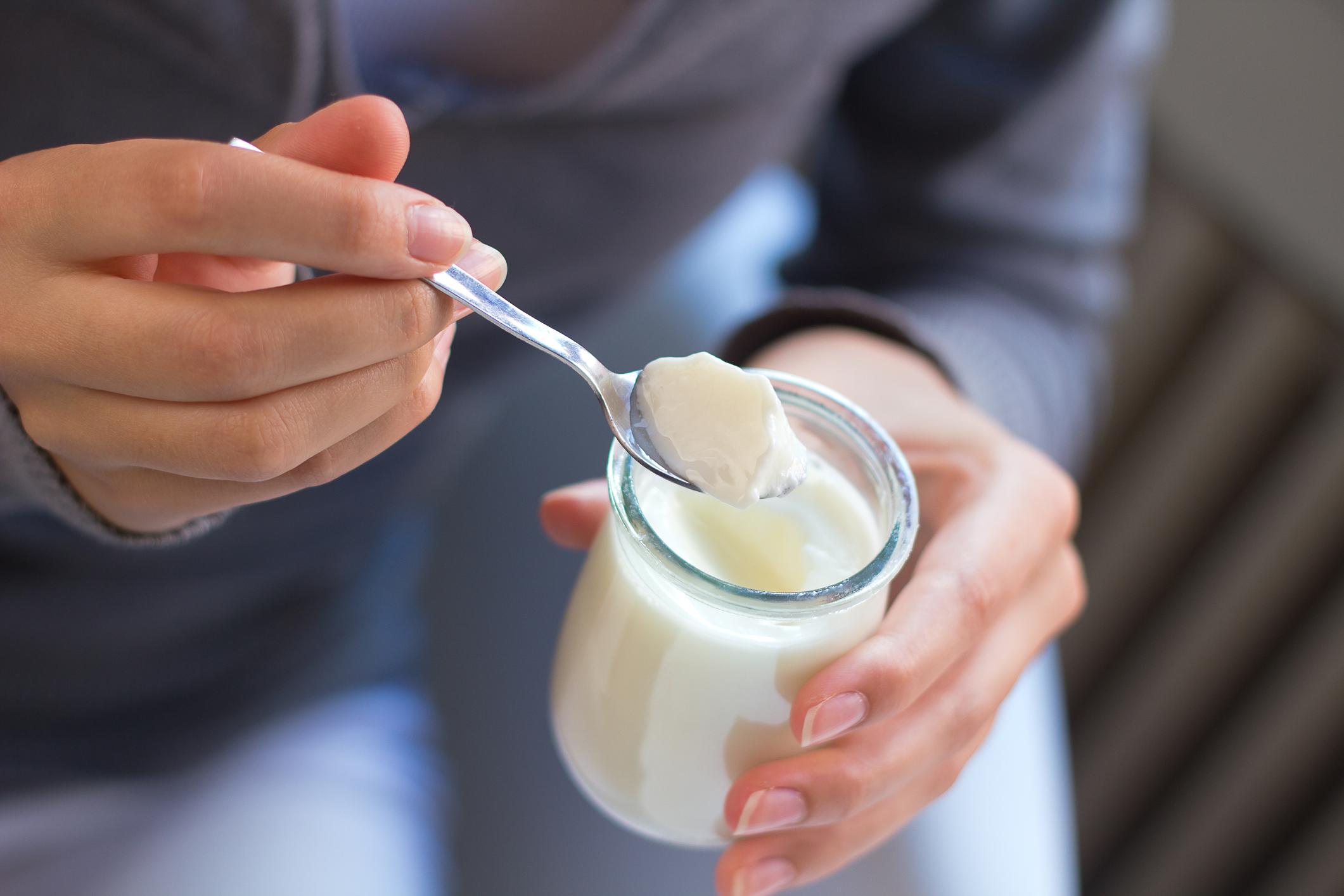
Bulgarian, Greek or kefir?
Yogurt has a healthy image. And rightly so, because this dairy product is packed with nutrients. Do you opt for the Dutch low-fat variant, Greek yogurt or kefir? What are the differences?
Yogurt is made by adding lactic acid bacteria to milk. This causes the milk to curdle or acidify and a fermented milk product is created. Only when a product contains sufficient live and correct bacteria – at least 10 million lactobacillus bulgaricus and streptococcus thermophilus per milliliter – can it be called yogurt.
What’s in it?
Yogurt contains calcium and is therefore an excellent alternative for people who do not tolerate milk well. The enzyme lactase is needed to digest lactose. The bacteria in yogurt contain high amounts of lactase, so yogurt actually helps to digest itself. Of course, the degree of lactose intolerance or hypersensitivity does play a role.
Yogurt is also a good source of potassium, magnesium, protein, and vitamins and minerals. The bacteria in yogurt help with digestion and with intestinal complaints such as constipation and diarrhea. That is also the reason that yogurt is often recommended after a course of antibiotics, of which diarrhea is a known side effect. The small group of bacteria that survive the journey through the stomach and small intestine has a stimulating effect on the intestinal flora. Dairy drinks based on probiotics also have this effect.
Left or right turning
There is left or right hand yogurt. The name has nothing to do with stirring the yogurt to the left or right, but everything to do with the lactic acid bacteria used. During the fermentation process, these bacteria produce lactic acid that – depending on the bacterial species used – is left-handed, right-handed or a combination of both. When it says ‘with dextrorotatory lactic acid’ on the packaging, the yogurt contains extra bacteria that ensure that especially dextrorotatory lactic acid is produced. This type of lactic acid is more easily digested by our body than the left-handed variant.
Right-turned yogurt tastes softer and is easier to digest, while left-turned lactic acid is said to have an acidifying effect and make it harder for the liver to process. Incidentally, you would have to eat about 7 liters of it to experience this adverse effect.
Full yogurt
Full-fat yogurt is made from a combination of whole milk and lactic acid bacteria. But one full-fat yogurt is not like the other. For standing yoghurt, this mixture is heated to 45 degrees Celsius, which ensures a firmer, granular structure. The preparation temperature of stirred yogurt is 32 degrees Celsius. This yogurt is stirred during preparation. This creates more mucus and makes the yogurt more liquid.
| Nutritional value per 100 grams | |
|---|---|
| kcal | 66 |
| Protein | 3.8g |
| Fat | 3.2 g |
| Of which saturated fat | 2.3 g |
| Calcium | 135mg |
Low-fat yogurt
Low-fat yogurt is made from skim milk with little milk fat. The fat percentage of low-fat yogurt is a maximum of 0.5 percent, ideal for those who watch their fat intake. Low-fat yogurt also has all the benefits of full-fat yogurt. Due to the lower fat percentage, low-fat yogurt is more liquid than the full version.
| Nutritional value per 100 grams | |
|---|---|
| kcal | 52 |
| Protein | 4.5 g |
| Fat | 0.9 g |
| Of which saturated fat | 0.6 g |
| Calcium | 114mg |
Low-fat fruit yogurt
Low-fat fruit yogurt is available in the ‘normal’ variant and often also in the form of drinking yogurt. The fruit flavor is usually due to added flavorings. In addition, fruit yogurt often contains added sugars; so it is a good idea to keep an eye on the label.
| Nutritional value per 100 grams | |
|---|---|
| kcal | 86 |
| Protein | 4 g |
| Fat | 0.9 g |
| Of which saturated fat | 0.7 g |
| Calcium | 162mg |
Greek yoghurt
Greek yogurt is thicker than regular yogurt. During the production process, the moisture is sieved out, which gives this yogurt its characteristic, creamy structure. Greek yogurt contains about 10 percent fat. You can reheat this variant without any problems: it does not curdle. It is therefore a great substitute for sour cream.
| Nutritional value per 100 grams | |
|---|---|
| kcal | 127 |
| Protein | 4.8 g |
| Fat | 10.5 g |
| Of which saturated fat | 6.9 g |
| Calcium | 100mg |
Bulgarian yogurt
Bulgarian yogurt is made from thickened milk and powdered milk. The fat content of this yogurt is about 5 percent higher than that of regular yogurt, which also explains why this yogurt is a bit thicker. The taste is smooth and creamy, which makes this yogurt a favorite with people who don’t like the normal sourness of yogurt.
| Nutritional value per 100 grams | |
|---|---|
| kcal | 87 |
| Protein | 5 g |
| Fat | 4.5 g |
| Of which saturated fat | 2.7 g |
| Calcium | 175mg |
Kefir
Kefir has been gaining popularity lately. Originally it comes from the Caucasus. It resembles a thin yogurt, but contains a different bacteria mix, making it officially a “fermented dairy product.” In addition to good lactic acid bacteria, kefir is rich in yeast cells. These yeasts produce lactase, a lactose-digesting enzyme, which makes kefir easy to digest and significantly reduces the risk of lactose intolerance. Kefir looks a bit slimy, but that is precisely why it is an excellent basis for the good bacteria in the digestive system. That is also the reason that this dairy drink is often used to combat stomach and intestinal problems.
| Nutritional value per 100 grams | |
|---|---|
| kcal | 58 |
| Protein | 3.1 g |
| Fat | 3.1 g |
| Of which saturated fat | 2.6 g |
| Calcium | 113mg |
Sources):
















